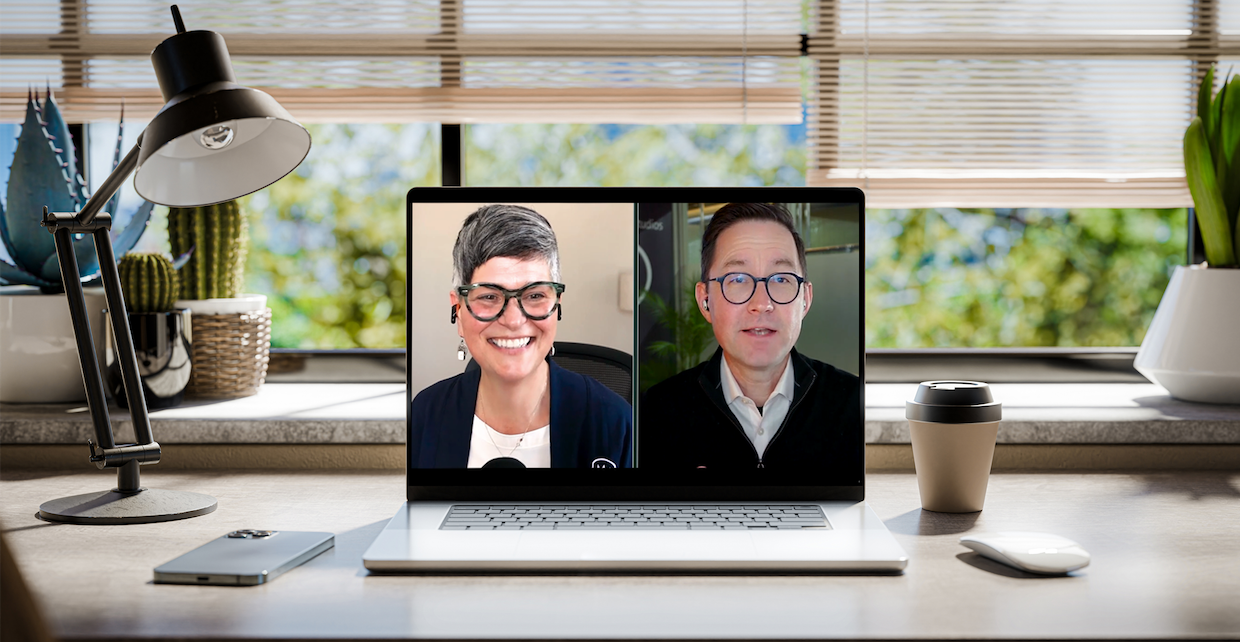How Top Inbound Marketers Mix SEO & SEM Strategies for Major Results
Written by
Like any field of expertise, digital marketing boasts its own alphabet soup of acronyms.
SEO and SEM are among the most commonly used jargon — and some of the most dependable strategies — for inbound marketers.
So you might be surprised to learn that plenty of folks would be hard pressed to distinguish clearly between SEO and SEM strategies, or to articulate the symbiotic relationship between the two.
Both SEM and SEO strategies focus on getting internet searchers to find your digital marketing content, but their methods are quite different. Questions about the distinctions include:
- What is SEM, and is SEO strategy part of it?
- Does SEM have a place in an inbound marketing program?
- Isn’t an organic focus on SEO the best choice in the long run?
If these sound familiar, no need to worry. In this article we’ll review the differences between SEO and SEM, explain how they mutually support and strengthen each other, and take a look at smart ways to leverage both SEO and SEM for maximum impact in your B2B inbound marketing plan.
.
First Things First: What Does SEM Stand For?
Let’s begin with the fundamentals. SEM stands for search engine marketing, and SEO stands for search engine optimization.
If you’re old school, you might think about marketing in terms like push and pull marketing as an analog. Using that analogy, SEM certainly leans toward an outbound, or push approach, especially compared with SEO. For simplicity’s sake, start with this easy-to-remember difference:
SEO is an organic search strategy.
SEM is a paid search strategy.
These separate but related strategies should both be included in your company’s online search marketing toolkit. In fact, you need effective SEO for effective SEM.
SEO is Foundational for Inbound Marketing
Search engine optimization (SEO) aims to increase the number of website visitors by elevating your site’s position on a search engine results page, or SERP. Improvements in SERP rankings are achieved through continuous optimization of site content based on keyword research, performance analysis, and content improvements. Because Google and other search engines continually change their search algorithms, SEO tactics are subject to constant adjustment, too.
One factor remains consistent: SEO comprises on-page and off-page strategies.
On-Page SEO Strategies
- Optimized meta data — incorporating target keywords into web page title tag, meta description, heading tags, image alt tags
- Optimized page copy — well-written text based on strategic keyword research and target audience insights
- Simple, well-formatted page URLs that include essential keywords
- Optimized page speed and performance
- Social sharing integration within the content
- Internal link building using targeted keywords and avoiding generic “link” text
- Content formats optimized for featured snippets, such as bulleted lists, callouts, tables, definitions, and numbered steps
Off-Page SEO Strategies
- Link building to attract and establish quality inbound links that build site authority; backlinks help make up the majority of off-page SEO
- Social signals — increasing traffic to a website as a result of social media sharing
- Social bookmarking to grab attention using sites like Reddit, Digg, and MIX
- Links from industry-specific online communities and trusted sources to attract your target audience
- Local SEO to promote products and services to prospective customers at the local level
When you create high-quality, helpful content that your target audience finds useful (such as blog articles and web page copy), over time, the pages’ performance helps build authority. That results in increased organic website traffic, growing opportunities for inbound links, and most importantly, more conversions.
SEM Builds on Your SEO Foundation and Amplifies Results
Search engine marketing (SEM) involves the use of paid ads on search engines to increase a website’s visibility and help increase traffic. But it’s not as simple as writing an ad and bidding on keywords. Ad copy and targeting strategies have to align with keywords that match target buyers’ search queries, so the ads show up for the right people at the right time, in relevant SERPs.
Tactical use of paid ads creates an opportunity to increase the visibility of targeted web pages, landing pages, blog posts, and other key content. So a marketer using SEM has to tap into both SEO and pay-per-click (PPC) ads to target potential customers and drive traffic.
So in short, yes — SEO becomes a key component of an SEM strategy
Search Engine Marketing (SEM) Strategies
Google Ads is far and away the most popular platform for hosting search engine ads, but it’s far from your only option. Microsoft’s Bing, Yahoo! Native, and Amazon ads can be smart choices for the right industries. If you have a target market in China, Baidu is where you’ll place ads.
Wherever you choose to spend your internet marketing budget, keep these key practices in mind for successful SEM:
- Launch an ad campaign to target a specific audience, whether industry vertical, geographic, target persona, or other characteristic
- Craft ad groups made up of target keyword variations
- Write relevant ad copy using selected keywords
- Set a budget for your ad spend
- Monitor ad campaign performance metrics like clicks, impressions, click-through rates, and average cost per click
- Develop retargeting audiences to amplify messaging through increased exposure
- Create targeted social media ads on audience-appropriate channels such as LinkedIn
If you’re just starting out in paid advertising, these seven considerations make a good start — but there are other considerations that go into launching and maintaining an effective paid search ad campaign. If you’re looking to use SEM to complement and amplify your SEO work, you’ll likely start with Google Ads.
RELATED: Is Pay-Per-Click a Fit for Your Digital Marketing Strategy? Get Started with the Inbound Marketer’s Guide to Paid Media.
So Which Strategy is Better, SEO or SEM?
At this point, it should be clear that this is a trick question. You know SEO serves as a foundational component of SEM. You can’t have successful SEM results without first having a disciplined SEO practice. They’re not comparable, and they’re not interchangeable — they’re complementary.
Make SEO Your First Focus
SEO lays the groundwork for SEM with optimized content that’s helpful to your prospects and customers. Without landing pages, web pages, and blog content that’s all optimized for search, SEM efforts fall flat due to poor quality. That makes it a lot more difficult to gain visibility on search engine result pages. And that can mean a wasted SEM budget.
Organic SEO helps establish search credibility, but the most important core focus needs to be consistently creating high quality content that’s worth searching for in the first place — and then sharing it on social media and other content distribution and promotion channels.
When to Focus on SEM
There are a few really significant use cases that call for immediate visibility in search, such as a new website for a company without an existing online footprint, or a new product or service rollout. Until you build up organic credibility, SEM is a valuable tool. A strategic PPC campaign can drive the traffic you need to establish a stronger online presence, faster.
But don’t expect to rely solely on PPC over the long term. You absolutely need to create helpful content that delivers meaningful value to visitors and encourages them to engage with your website.
Every situation is unique, so be sure to evaluate what’s best for your specific needs, but make sure you and your digital marketing team members fully understand the differences between SEM and SEO. And plan ahead for continuous content optimization and improvement going forward.
Get an easy-to-understand introduction and training in SEO basics and beyond, at your convenience. Just click to access the webinar, Demystifying Search Engine Optimization, and start confidently crafting your search marketing strategy.
Subscribe To Our Blog
Information. Insights. Ideas. Get notified every time a new Weidert Group blog article is published – subscribe now!
You May Also Like...

Artificial Intelligence
AI, Analytics & Content: Right-Now Strategies with Andy Crestodina

Artificial Intelligence
Revenue-Driving B2B Content Marketing Strategy with Andy Crestodina

Artificial Intelligence
AI Agents Are Here—How Smart Businesses Are Using Them Now
Accelerate Your Growth with
Weidert Group
If you’re ready to explore a partnership, request a personalized consultation with our team.

